- Data Basin |
- Datasets |
- Ecological Community Types
Ecological Community Types
Aug 20, 2015
Uploaded by
Rensselaer Plateau Alliance
- Description:
- Comprehensive ecological community map for the Rensselaer Plateau based on the one ecological community most likely/certain from each location, plus two additional county-rare communities that were identified from only one location each on the plateau but as less certain. With one record per community type and information more relevant to the general community type globally and across the plateau than to individual patches. Ecological communities are basic ecological units representing an assemblage of specific plants and animals that repeat across a landscape. Community types identified from the plateau include various uplands, wetlands, lakes, rivers, and caves, some classified as natural types, others as cultural types. Numerous attributes on GIS provide detailed community-specific information including ones for the community classification hierarchy, land cover classification, community rarity, ecological feature indicators, forest-interior disturbance, and abundance characteristics. Additional information on presence certainty on the plateau, regional community distribution, characteristic biota, conservation importance, and occurrence ranking guidelines are pending uploading onto GIS. Linear and the two county-rare PatchCode 2 communities, which overlap with polygon communities, are shown in cross hatch symbols.
- Data Provided By:
-
Conceptualization:
Rensselaer Plateau Ecological Features Working Group (David M. Hunt, Ecological
Intuition & Medicine, with assistance from and review by Nick Conrad,
Rensselaer Land Trust and New York Natural Heritage Program).
Polygon and Line Aggregation: David M. Hunt, Ecological Intuition & Medicine, with assistance from Rachel Riemann, U.S. Forest Service
Attribute Population: David M. Hunt, Ecological Intuition & Medicine.
- Content date:
- Based primarily on 2004 aerial photographs. Likely to have an accuracy of 90% or more for several years to several decades (past to future), averaging an estimate of about 25 years past and future. a mid-term ecological feature sometimes strongly altered by land use (e.g., forest clearing), both in terms of the presence and the boundaries of communities. see the Rensselaer Plateau Ecology Report, Ecological Communities, Sections NC4-2 and NC11-3.
- Citation:
- Hunt, David M. 2013. Comprehensive Ecological Community Map for the Rensselaer Plateau. ARC GIS datalayer. prepared for the Rensselaer Plateau Alliance and New York State Department of Environmental Conservation Hudson River Estuary Program.
- Spatial Resolution:
- About 1:8000 scale
- Contact Organization:
- Rensselaer Plateau Alliance (RPA), http://www.rensselaerplateau.org. For technical information, contact: Rachel Riemann (rriemann17 @ hotmail.com); For content questions, contact David Hunt (518-279-4124).
- Contact Person(s):
- Use Constraints:
 This work is licensed under a Creative Commons Attribution 3.0 License.
This work is licensed under a Creative Commons Attribution 3.0 License.
- Layer:
- Layer Type:
- Currently Visible Layer:
- All Layer Options:
- Layers in this dataset are based on combinations of the following options. You may choose from these options to select a specific layer on the map page.
- Description:
- Spatial Resolution:
- Credits:
- Citation:
- Purpose:
- Methods:
- References:
- Other Information:
- Time Period:
- Layer Accuracy:
- Attribute Accuracy:
FGDC Standard Metadata XML
Click here to see the full FGDC XML file that was created in Data Basin for this layer.
Original Metadata XML
Click here to see the full XML file that was originally uploaded with this layer.
This dataset is visible to everyone
- Dataset Type:
-
Layer Package
Downloaded by
9 Members
Included in
1 Public Map
Included in
1 Public Gallery
About the Uploader

Rensselaer Plateau Alliance
Environmental Non-Profit
The Rensselaer Plateau Alliance (RPA), established in 2008, is a diverse group of organizations and people who want to conserve and protect the forested character of the Rensselaer Plateau and the many economic and environmental benefits it provides. A grassroots organization, the RPA is people...


